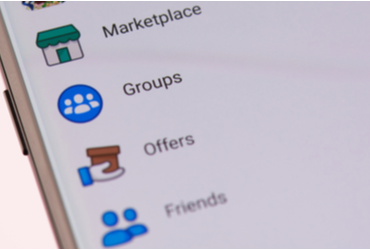Why Organisational Change is Essential to Successful Social Media Engagement
This morning I attended a particularly impressive speech from social media guru Martin Thomas, the author of ‘Loose’ and co-author of ‘Crowd Surfing’. The event was hosted by our partners at Finn PR.
Martin spoke about Social Media and how the main challenge for businesses is not the technology involved – it is the cultural and organisational change that comes with being social. His ethos is that before a company can leverage social media successfully it has to ‘loosen up’ and start a culture shift (from the top down). Martin describes four main drivers for why businesses need to change their approach:
1 | Chaos and Complexity in the World – The world is no longer highly structured and organised. Sir Martin Sorrell said “the 21st Century is not the place for tidy minds” and his words are true. There is no space for control freaks.
2 | New Forms of Organisation – Organisations today are less structured and rigid than they were in the past. Martin’s example was Wiki Leaks – no staff, no offices yet it is a hugely powerful and influential organisation!
3 | Generational Shift – The generations entering the workplace today have a different mind-set. Not only are they more tech savvy but they expect more from their employers and want to be seen as being ‘different from what went before them’. They are very ambitious (maybe due to increased competition in the job market) and active social media usage is ingrained in them.
4 | New Technology – Technology and trends evolve fast – enough said.
These four things combined are forcing the hand of some companies to change their internal culture. Perhaps in the past these organisations got away with being intrinsically tight, and restrictive in their approach to customer services, PR and marketing but today this is simply not effective.
Social Media is Driving New Behaviour
Social media has without doubt driven new behavioural trends. Some might argue it has just created additional headache for businesses. Procter & Gamble were famously caught saying social media simply ‘amplified the volume of moaning’.
Hyper Connectivity
The world is hyper-connected. Customers demand instant gratification and there is an increasing sense of impatience. The era of waiting in queues for call centre operators is coming to an end as more and more people try to queue-jump via social media – we are now demanding real time customer service experiences.

A great example of this was from Virgin Trains – a passenger complained via Twitter about the air con being off. The tweet made it all the way to Virgin Trains head office and sent on to the driver of the train who activated the air con and made an announcement thanking the passenger for making him aware. This is a brilliant example of good and reactive customer services however, the question it raises is: If that is how we start to respond to customer queries, how much more will our customers demand from us and come to expect as a standard? “Businesses need to get better at responding to consumers and breaking news in real time rather than in their own institutional time” said Thomas.
You have a 60 minute response time when deciding whether to reply to negative blog comments – 60 minutes seems a lot when you consider you only have 10 minutes to decide what to reply to a negative tweet! With this in mind, it is astonishing that some companies who actively choose to engage in social media can take 10 days to get a tweet approved (yes this is a real life example)!
The Connected Consumer vs. The Disconnected Organisation
There is a new struggle between the highly connected and tech savvy consumers and the organisations whose customer facing departments are disconnected and siloed. There is simply no room for this approach when using social media.
How to Use Social Media Effectively Without Destabilising Your Business
It’s totally understandable that social media is a destabilising entity in some businesses, especially if they haven’t got the company culture that compliments it. If your business is one of the many who restrict the use of social media, or block its use altogether, you no doubt think there is more to be lost than gained from the use of it. Thomas gave his top 5 tips for how businesses can get the most from social media:
1 | Instil Trust
“Trust is the bedrock of social media change”. CEO’s have to take an approach of presumed competence rather than presumed incompetence. Take the Nordstrom example, Nordstrom have a new employee pack which includes a rule book. In the rule book there is only one rule and it is: ‘Use good judgement at all times”. Thomas also said that being ‘loose’ is not easy. The critical factor is that you spend time and energy on recruiting, training and retaining the right staff . If they are not right for your business do not employ them – and if they are right and you should feel comfortable empowering them to play an active part in your company’s social media profile.
2 | Be Open and Honest
Secrets don’t stay secret for long online. Transparency and honesty are important. Plus we all need thicker skins – we cannot please all of the people all of the time. ASDA is a good example – when people criticised their £2.50 chickens, questioning the quality of life of the birds, ASDA put live webcams up so people could see the conditions for themselves.
Social media will bring critics to your door but this is not altogether negative. Studies show that people who have a mix of both negative and positive reviews on their websites will actually gain more trust (68%) and more sales (70% are more likely to buy from sites with mixed but authentic review profiles). People are suspicious of anything too perfect or anything that looks unnatural or staged.
3 | Be Agile
Agility is essential. It cannot take you 10 days to sign off a tweet. Those brands leading the way for positive social media usage have command centers that monitor all their comments 24 hours a day. You have to know about it in order to respond! This is particularly important for crisis and reputation management.
4 | Be Informal
One really interesting point Martin makes is that the content you produce no longer has to be perfect either. Particularly in a crisis there is not time to make a corporate video or well-tuned speech. Action is needed immediately. Will Walsh of British Airways took it upon himself to produce a short video responding to the cabin crew strikes. He did it ad hoc and while it was done on the fly, it was more powerful because it was honest, timely and not overly polished.
5 | Collaboration
Today’s world has a self-organising spirit. The riots were an example of this, although not a good one perhaps. Things just happen because there is a sense of community online – and sometimes this is more than there is offline! Communal spirit can be leveraged by organisations in so many positive ways, from creative product development to cutting costs: Someone once said ‘no one wants a relationship with a bag of crisps’ however Walkers might argue differently considering the volume of responses it had to its last flavour campaign! Visit Britain reportedly saved £200k by sourcing photos from Flickr last year.
McKinsey found that 70% of companies said they built value from creating online communities – Thomas gave an excellent example – RS Components who created the DesignSpark community. They managed to build a community of 17,000 design engineers from 139 countries. As a result they had direct access to key influencers and financial analysts actually uprated the parent businesses finance rating! The point; things can be better organised without any organisation at all (also consider the very successful community powered business – GiffGaff from O2)! This extends to customer services too – why not let your customers help other customers?
Key Takeaways from the Martin Thomas ‘Loose Theory’
To summarise a few key points from the session:
– It is easier to get customer services staff to engage and learn about social media than it is to get techies to be good at handling customers
– Time spent on social media is what you make of it. When people found out that the CEO of Starbucks spent up to two hours a day on Twitter responding to customer queries – some questioned whether his time could be better spent elsewhere. He however saw it as being at the front line of his business.
– Fully embracing social media will make your company better (and probably improve the way your staff perceive your business too).
– Get the organisational culture right and success in social media should follow.
I tip my hat to Martin Thomas who really inspired me this morning. The greatest part is that all of this activity plays into your SEO strategy – all the content you create, all the mentions you generate and all the noise made online about your brand is playing an increasingly large part in your ranking too! PR, Marketing, SEO and Social are all intrinsically linked – combine the in-house skills you have in this area for best success.
Finn PR will be running another session on 11st September in Leeds – this time Mr LinkedIn: Mark Williams will be speaking about how businesses can leverage LinkedIn better. If you are interested in attending please email us at [email protected]!
About Martin Thomas
Martin is a business consultant and writer. Having co-founded Nylon, WPP’s specialist communications agency has worked with major brands including Xerox, Morrison’s and Sony Ericsson. Follow Martin: @crowdsurfing


